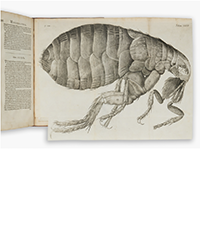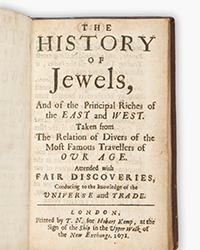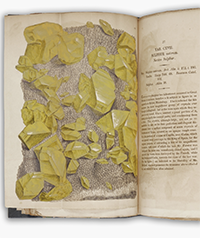Like many “generous aristocrats1”, the well-born Marquis de Chastellux went to America in 1780 to fight on the side of the insurgents during the War of Independence (1775-1783). There he became acquainted with George Washington and other important figures of the conflict—including Jefferson. The letters he wrote to his friends on this occasion were printed without his consent in Europe, not only because they gave pertinent pieces of information on a newly born country, but also because the sarcastic wit of Monsieur le Marquis was irresistible—and sometimes dramatic.
Chastellux’s voyages in America is a classic; not only of travel books, but also in American history. According to latest French edition (Tallandier, 1980), “the Americans (...) see it as the most fundamental book about their origins.” I knew the common Prault edition of 1786 in 2 volumes, but was unaware of the peculiar story of this book until I came across an intriguing edition: a 136-page in-8° volume with no engravings—whereas the Prault edition comes with 2 maps and 3 plates. Yet, the last page reading the crucial word Fin, it was consequently complete. This bizarre edition entitled Voyage de M. le Chevalier de Chastellux, en Amérique was printed in 1786, in Paris, and sold at Le Francq’s, in Brussels, Belgium. I started to investigate, and with the help of my best man, Detective Google, I soon found another copy, sold at an auction in 2015. The expert had described it as “extracts” from the Voyages du marquis de Chastellux, adding: “The authorized version was published the same year in two volumes by Prault.” Was my bizarre edition a pirate best of, then? Another bookseller also mentioned the “ultra-rare Newport edition of 1781” as well as “a 1785 issue.” So, this would be the third—and unauthorized—edition of the Voyages of Chastellux?
In their literary correspondence, Grimm and Diderot mention the “ultra-rare edition” of 1781. Entitled Voyage de Newport à Philadelphie, Albany, etc., it was printed “Á Newport, de l’imprimerie royale de l’escadre.” It is an in-4° volume of 188 pages. Chastellux did three voyages on the margins of his official assignment. The first ones, between 1780 and 1781, took him to Newport, Philadelphia or Rhode Island; during the last one, the following year, he visited Virginia and Pennsylvania. The “ultra-rare edition” contains the relation of the first two voyages. “Twenty-four copies only (or 27 according to Barbier, Charles Evans and The Warden Catalogue) were printed, and the National Library of France owns one of the six or seven copies which, according to Chastellux himself, ever reached Europe. Nine only are today listed worldwide—seven belong to public libraries, and two to private collections,” writes Jacques Jourquin in his authoritative foreword to the Tallandier edition (1980). About the fantastical mention printed on board of the royal squadron, he says: “This was a small squadron of six or seven ships, (...) which also printed a short-lived Gazette française (...). It was conveniently located ashore, in Newport.”
In 1785, a new edition of Chastellux’s voyages was anonymously printed in Cassel (228 pages). “It is not, as some bibliographers—who had never seen it—claimed, a reprint of the original Newport edition,” underlines Jacques Jourquin, “but the collection of extracts from both the original edition and the manuscript of the second voyage.” An unscrupulous bookseller collected them from Grimm’s Cahiers de lecture, printed in Gotha, Germany. The foreword to the Prault edition explains: “One of (Chastellux’s) friends (...) convinced him to publish some detached parts of his (second voyage) in a periodical printed in Gotha (...). He agreed, and some letters were regularly given to the public for a full year’s time (1784—editor’s note). These extracts were indifferently taken from the first and the second voyages, in no chronological order so that no one could compile them and sell them as a complete book. Experience proved these precautions insufficient.”
Jourquin adds that there are two versions of the Cassel edition, which only differ from their respective sizes and numbers of pages—the text being similar. “This incomplete and ill put together book was yet so successful that it was twice reprinted, first in Paris and then in Brussels, at B. Le Francq’s.” Bingo! Our bizarre edition was thus the second one, illegally reprinted from the Cassel one! It was also translated into German and twice printed, in Hamburg and Leipzig, in 1786. “Convinced by those successive editions of the interest sparked by his writings,” Jourquin resumes, “and fearing to see those incorrect editions spread, the author resolved to put out an integral version in 1786, at Prault’s (...). It features the first two voyages as well as the third one, the latter being by then totally original.” In 1788, Prault reprinted the first volume under supervision of Chastellux, “who died the same year.” (Jourquin). The second volume of this revised version didn’t come out before 1791. The book was also translated into English in 1787 (London), but wasn’t published in the US until 1827—augmented with 15 letters of George Washington. “And then, there was silence,” Jourquin deplores.
What’s so exciting about this reading is the way these letters were written—in complete liberty. Liaising Rochambeau and Washington’s armies, Chastellux met some key figures of the war of independence, and his portrait of Washington—intimate and genuine—, is fascinating. But even more fascinating are his remarks on various aspects of the ill known American every day life. Food, accommodation, natural history, characters of his hosts, nothing escapes the hawk eye of our aristocrat. There’s, furthermore, something captivating in his ability to describe people with a handful of acute words—and a touch of aristocratic scorn. Born in 1734 in a noble family, Chastellux grew up among famous people, including Buffon. He enrolled at 15 and turned to literature after the Seven Years’ war. “He was close to the Encyclopaedists like Helvetius, d’Alembert or Turgot, who warmly welcomed such a recruit,” writes the Duke of Castries in his foreword to the Tallandier edition (1980). He became close friend with David Hume, then secretary of the Ambassador of England in Paris, and when he published his essay De La Félicité Publique... (Amsterdam, 1772), Voltaire, “who didn’t mind flattering a powerful man,” (Castries), praised it beyond reason. In 1775, Chastellux even became a member of the prestigious Académie Française, and went to America with the army of Rochambeau 5 years later. He was what French people call a “bon vivant”—he enjoyed the good things in life, including women to whom he dedicates an extraordinary passage of his book, comparing American and French women. Aged 53, he married a young Irish beauty and died after a few months “of a warm relationship, which probably exhausted him.” (Castrie)
1Voyages dans l’Amérique septentrionale... (Tallandier, 1980).




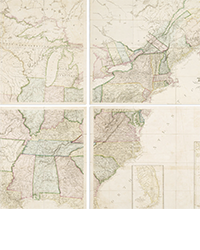
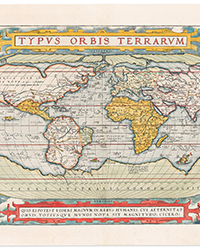

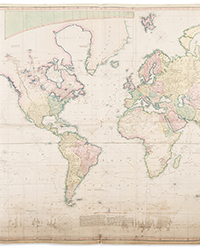
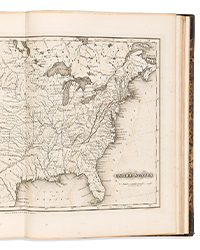


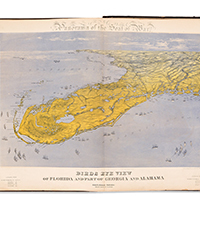
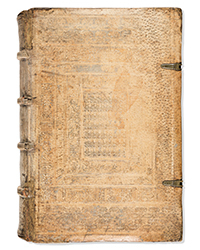
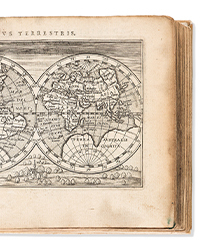


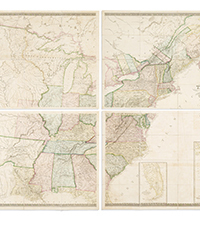


![<b>Sotheby’s, Dec. 11:</b> Darwin and Wallace. On the Tendency of Species to form Varieties..., [in:] <i>Journal of the Proceedings of the Linnean Society,</i> Vol. III, No. 9., 1858, Darwin announces the theory of natural selection. £100,000 to £150,000. <b>Sotheby’s, Dec. 11:</b> Darwin and Wallace. On the Tendency of Species to form Varieties..., [in:] <i>Journal of the Proceedings of the Linnean Society,</i> Vol. III, No. 9., 1858, Darwin announces the theory of natural selection. £100,000 to £150,000.](https://ae-files.s3.amazonaws.com/AdvertisementPhotos/00d5fd41-2542-4a80-b119-4886d4b9925f.png)


